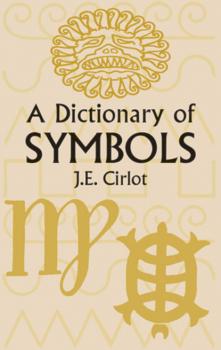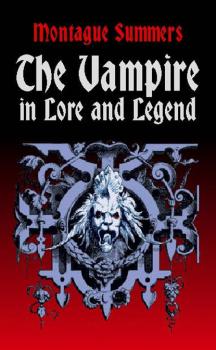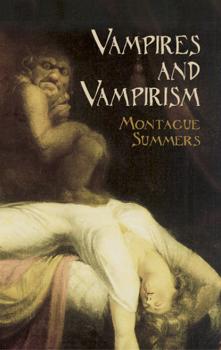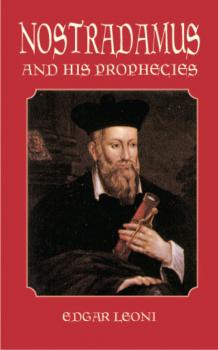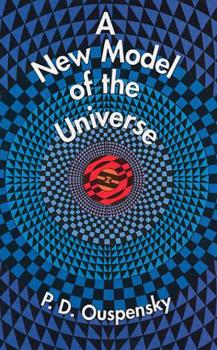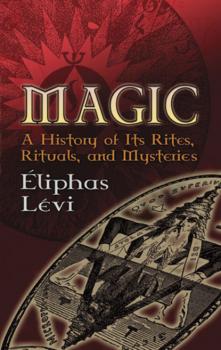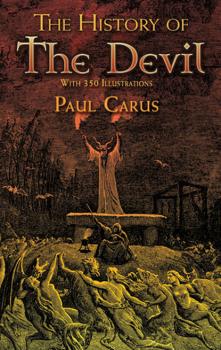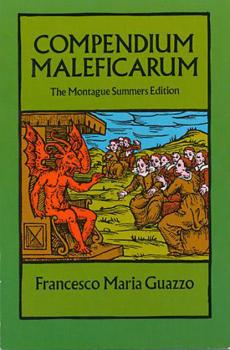ТОП просматриваемых книг сайта:















Dover Occult
Скачать книги из серии Dover OccultАннотация
Humans, it's said, are symbolizing animals. At every stage of civilization, people have relied on symbolic expression, and advances in science and technology have only increased our dependence on symbols. The language of symbols is considered a science, and this informative volume offers an indispensable tool in the study of symbology. It can be used as a reference or simply browsed for pleasure. Many of its entries — those on architecture, mandala, numbers, serpent, water, and zodiac, for example — can be read as independent essays. The vitality of symbology has never been greater: An essential part of the ancient arts of the Orient and of the Western medieval traditions, symbolism underwent a 20th-century revival with the study of the unconscious, both directly in the field of dreams, visions, and psychoanalysis, and indirectly in art and poetry. A wide audience awaits the assistance of this dictionary in elucidating the symbolic worlds encountered in both the arts and the history of ideas.
Аннотация
"Throughout the whole vast shadowy world of ghosts and demons there is no figure so terrible, no figure so dreaded and abhorred, yet [looked upon] with such fearful fascination, as the vampire, who is himself neither ghost nor demon, but yet who partakes the dark natures and possesses the mysterious and terrible qualities of both."So begins this riveting study by one of the foremost authorities on witchcraft and occult phenomena. An indefatigable researcher, Summers explores the presence of vampires in Greek and Roman lore, in England and Ireland during Anglo-Saxon times, in Hungary, Czechoslovakia, Russia, Romania, and Bulgaria, even in modern Greece. More than just a collection of library lore, however, this detailed examination of the history of vampirism in Europe also includes anecdotes and firsthand accounts gathered by the author from peasants in places where belief in vampires was still common.A fascinating, sometimes terrifying book, The Vampire in Lore and Legend is a «mine of out-of-the-way information full of unspeakable tales,» writes The New York Times; and according to Outlook, «a fascinating inquiry into the vampire legend . . . a storehouse of curious and interesting lore.» Of great interest to any enthusiast of the supernatural and the occult, this book will appeal as well to the legions of general readers captivated by this ancient myth.
Аннотация
Any investigation into vampire legends leads inevitably to the works of Montague Summers (1880–1948), whose research and writings in the 1920s established him as the subject’s preeminent authority. This study examines vampire lore in fantastic detail, constituting a record of folk beliefs unequaled in its sheer scope and depth. It features all the apparatus of an academic work, including footnotes and references to rare source documents, and it addresses such issues as how vampires came into existence, vampirish behavior, vampire-like ancient myths, and vampires in modern literature.
Информация о книге
Автор произведения Montague Summers
Жанр Старинная литература: прочее
Серия Dover Occult
Аннотация
Written by a venerable author of occult studies, The Werewolf in Lore and Legend is the first definitive book on werewolfery and the remarkable successor to Montague Summers's popular work, The Vampire. Unsurpassed in its sheer scope and depth, it employs an extensive range of historical documentation and folklore from throughout Europe to powerfully portray the horror associated with belief in werewolves.Summers adopts a comprehensive theological and philosophical approach, cataloging a series of literary connections between witch and wolf. Drawing upon the work of anthropologists, totemists, and rationalists, he examines the supernatural practice of shapeshifting, notes the finer distinctions between werewolfery and lycanthropy, and explores the differences of opinion on exactly how ordinary humans are transformed into creatures of «unbridled cruelty, bestial ferocity, and ravening hunger.» The author's Gothic style, rich in fascinating examples and anecdotes, offers compelling fare for lovers of esoteric lore. Even the most skeptical of readers can appreciate the evocative ways in which The Werewolf in Lore and Legend conveys the dread of those for whom these monsters were not mere superstition but terrifying reality.
Аннотация
For over 400 years the prophecies of the controversial French prophet Michel Nostradamus (1503-66) have fascinated people because they project far into the future (A.D. 3797), and because they are open to countless interpretations. Until the publication of this book, however, there was no truly complete translation of the prophecies with even the minimum of scholarly apparatus required. Edgar Leoni’s comprehensive, definitive study not only fills that gap but goes far beyond.This edition includes parallel texts in English and French of all Nostradamus’s prophecies (arranged in then «centuries,» or collections of 100 rhymed quatrains). Also included are explanatory notes, a series of indexes, historical background to the prophecies, a Commentary section, including the most famous — and infamous — interpretations; a critical biography of Nostradamus, his will and personal letters, and bibliographical material on both Nostradamus and his commentators.Reviewing Leoni’s opus in the American Historical Review, Harvard historian Crane Brinton praised the book’s «meticulous scholarship» and obvious worth to historians, adding that «it also makes surprisingly interesting reading.»
Аннотация
Along with Aleister Crowley, Madame Blavatsky, and George Gurdjieff, P. D. Ouspensky (1878 –1947) was one of the most important and influential figures in the occult movements of the twentieth century. With such books as The Fourth Dimension (incorporated in this present volume), Tertium Organum, In Search of the Miraculous, and The Psychology of Man's Possible Evolution, he earned a loyal following among those seeking a deeper knowledge of themselves and their lives, and of the meaning of human existence.In the present book, Ouspensky analyzes certain older schools of thought, of both East and West, connects them with modern ideas and explains them in the light of twentieth-century discovery and speculations in physics and philosophy. In the process he explores relativity, the fourth dimension, Christian symbolism, the tarot, yoga, dreams, hypnotism, eternal recurrence, and various psychological theories.The book closes with an examination of the role of sex in the evolution of man toward superman. Anyone interested in the occult, mysticism and the relationship of those elements to scientific developments in the modern world will find much to ponder in these stimulating, thought-provoking pages.
Аннотация
For nearly three centuries <I>Malleus Maleficarum </I>(The Witches' Hammer) was the professional manual for witch hunters. This work by two of the most famous Inquisitors of the age is still a document of the forces of that era's beliefs. Under a Bull of Pope Innocent VIII, Kramer and Sprenger exposed the heresy of those who did not believe in witches and set forth the proper order of the world with devils, witches, and the will of God. Even if you do not believe in witchcraft, the world of 1484 did.<BR>Contemporary cases illustrate methods by which witches attempt to control and subvert the world: How and why women roast their first-born male child; the confession of how to raise a tempest by a washwoman suspended «hardly clear of the ground» by her thumbs; methods of making a formal pact with the Devil; how witches deprive men of their vital member; and many others. Methods of destroying and curing witchcraft, such as remedies against incubus and succubus devils, are exemplified and weighed by the authors.<BR>Formal rules for initiating a process of justice are set down: how it should be conducted and the method of pronouncing sentence; when to use the trial by the red-hot-iron; how the prosecutor should protect himself; how the body is to be shaved and searched for tokens and amulets, including those sewn under the skin. As Summers says, it was the casebook on every magistrate's desk.<BR>Montague Summers has given a very sympathetic translation. His two introductions are filled with examples of witchcraft and the historical importance of Malleus Maleficarum. This famous document should interest the historian, the student of witchcraft and the occult, and the psychologist who is interested in the medieval mind as it was confronted with various forces which could be explained only by witchcraft.<BR>
Аннотация
"The most arresting, entertaining, and brilliant of all studies on the subject." — Arthur Edward WaiteA great work of literature as well as a pioneering classic of occultism, this voluminous historical survey traces the roots and manifestations of magic through the ages as a secret tradition persisting from remote times. Author Éliphas Lévi, pseudonym of Alphonse Louis Constant (1810-75), was a leader of the French occult revival, a spiritual teacher and magus who is today considered by some to be a founding father of the New Age movement. One of his most stunning (and original) revelations connects the Kabbalah with the Tarot, thus helping to inspire the ongoing fascination with the symbols of both, and their correspondences with each other. In this 1860 work, Lévi's discussions include topics that continue to intrigue modern readers, subjects as seemingly disparate as the mathematical magic of Pythagoras, magical monuments, magic and Christianity, the devil, the Knights Templar, alchemy, the illuminati, hallucinations, and many others that are equally alluring.The first part of the book explains the principles underlying magical operations, while the second part addresses the actual ritual and practice of transcendent magic. An essential resource for the library of anyone interested in mysticism and the occult sciences, this influential work appears here in its first English translation (from the original French) by the distinguished scholar and co-creator of the Rider-Waite Tarot deck, A. E. Waite.
Аннотация
A pioneer in the promotion of interfaith dialogue, Paul Carus (1852–1919) was a highly regarded writer on philosophy and comparative religion and a major influence in introducing Buddhist and other Eastern ideas to the West. The History of the Devil is his magnum opus, exploring the evolution of the idea of evil and the concept of Satan from antiquity to modern times.Carus follows the devil around the world, highlighting satanic manifestations in a fascinating variety of cultures and historic periods. In addition to examining the concepts of good and evil as religious and philosophical ideas, he discusses the particulars of demonology in ancient Egypt and Persia, in Hindu and Buddhist thought, in early Christianity, and throughout the Inquisition and Reformation. At once scholarly and intriguing, the text is enhanced by 350 rare and fascinating illustrations.
Аннотация
This extraordinary document, considered one of the most important manuals ever compiled on witchcraft, offers striking insight into the early seventeenth-century mind and society's attempts to cope with the evils it saw manifested in sorcery.A collection of writings by the Ambrosian monk Francesco Maria Guazzo, the Compendium comprehensively and penetratingly describes the entire practice and profession of witchcraft. First published in 1608, the commentaries came at an appropriate time. Contemporary accounts noted that witchcraft and sorcery had «spread in all directions,» leaving «no country, town, village, or district, no class of society» free from the practice. This probing work, by a distinguished writer and scholar who perceived the devil as an evil force seeking to destroy men's bodies and souls, was an attempt to help man live piously and devoutly, thus guarding against such seductions and manipulations.Reproduced from a rare limited edition published in 1929 and supplemented with many erudite editorial notes by the Rev. Montague Summers, the Compendium Maleficarum includes profoundly serious discussions of witches' pacts with the devil, finely detailed descriptions of witches' powers, poisons, and crimes; sleep-inducing spells and methods for removing them, apparitions of demons and specters, diseases caused by demons, and other topics. Also examined in detail are witches' alleged powers to transport themselves from place to place, create living things, make beasts talk and the dead reappear; witches' use of religion to heal the sick, laws observed by witches to cause and cure illness, differences between demoniacs and the bewitched, and other subjects from the realm of the supernatural.Here is an encyclopedic tract of incalculable worth to the historians and student of the occult and anyone intrigued by necromantic lore, sabbats, sorceries, and trafficking with demons.

